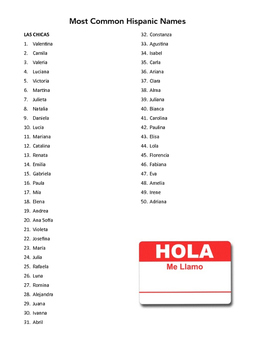


Because the villages and towns were relatively small, you will find that there are rarely more than one family with the same two last names.unless that is if a set of brothers marry a set of sisters. How? By looking at the two last names! Of course, you need to cross-check it to the ages to be sure it makes logical sense. So if you find an ancestor, if you look at the pages before and after, it is very likely that you will find siblings. They often set up a home just next door and down the road from parents and siblings. (I explain this on another page.) Most of Puerto Rico was rural and groups of families populated the villages and towns. If you are looking through the Puerto Rican censuses, you will see that outside of the metropolitan areas (San Juan, Santurce, Ponce, Bayamon) the homes do not have addresses. And of course, the most obvious, there is no issue with finding maiden names! It is amazingly easier to trace back further generations with the mother's name already known. Third, upon discovering cousins or grandchildren living in the home, you can investigate to find out who the parents are by tracing the two last names. Second, it aids in finding siblings if you are looking to create a larger family tree. First, because it is easy to track a person over periods of time in various documents. To the average American, that seems like a mouthful but for a genealogist, it is a practice that is extremely useful for various reasons. Maria Luisa Rivera Garcia de Felicianoor Maria Luisa Rivera y Garcia de Feliciano.) Tomas Rivera y Castro.) Upon marriage, a Puerto Rican woman could choose to add her husband's last name by adding the word de meaning 'of' before her husband's first last name. Maria Luisa Rivera Garcia.) You may find it written with or without the word y meaning 'and' between the two last names. A child born would be given a first and middle name and then the first last name of the father followed by the first last name of the mother. Puerto Rican genealogy is made exponentially easier because of the use of multiple surnames. Puerto Rico used the Spanish practice of using the last names of both parents. Puerto Rican last names can seem a bit confusing but it is actually a gift. While this is an old tradition, Francesco or his parents may choose to give him one surname one of Perez and Gonzales (father’s side) and one out of Alonso and Lopez. Yes really, your bisabuela probably had three last names. Suppose, Raul Perez (father’s surname) Gonzales (mother’s surname) and Maria Alonso (father’s surname) Lopez (mother’s surname) have a son named Francesco, he will adopt the surname of both his grandfathers, i.e. Let me explain this with the help of an example.

While for the sake of simplicity, a person may be addressed only with the last name of the father which is kept, the official birth name still has two surnames. Now the child can be given any one of the two surnames his father has and one which his mother has. Traditionally, a child would take the last name of both his maternal and paternal grandfathers, but due to gender inequality issues, that rule has been overrun. While in most cultures, a child takes up the last name of either his mother or his father, a child in Hispanic or Mexican culture is given surnames of both. Unlike other cultures, a Mexican (or a Spaniard) has two surnames. And amongst other Mexican things which find their origins in Spain, are their names, their last names and their naming system. When the Spanish conquistadors completed the colonization of Latin America, they completely imposed their culture, norms and traditions on Latin America.


 0 kommentar(er)
0 kommentar(er)
